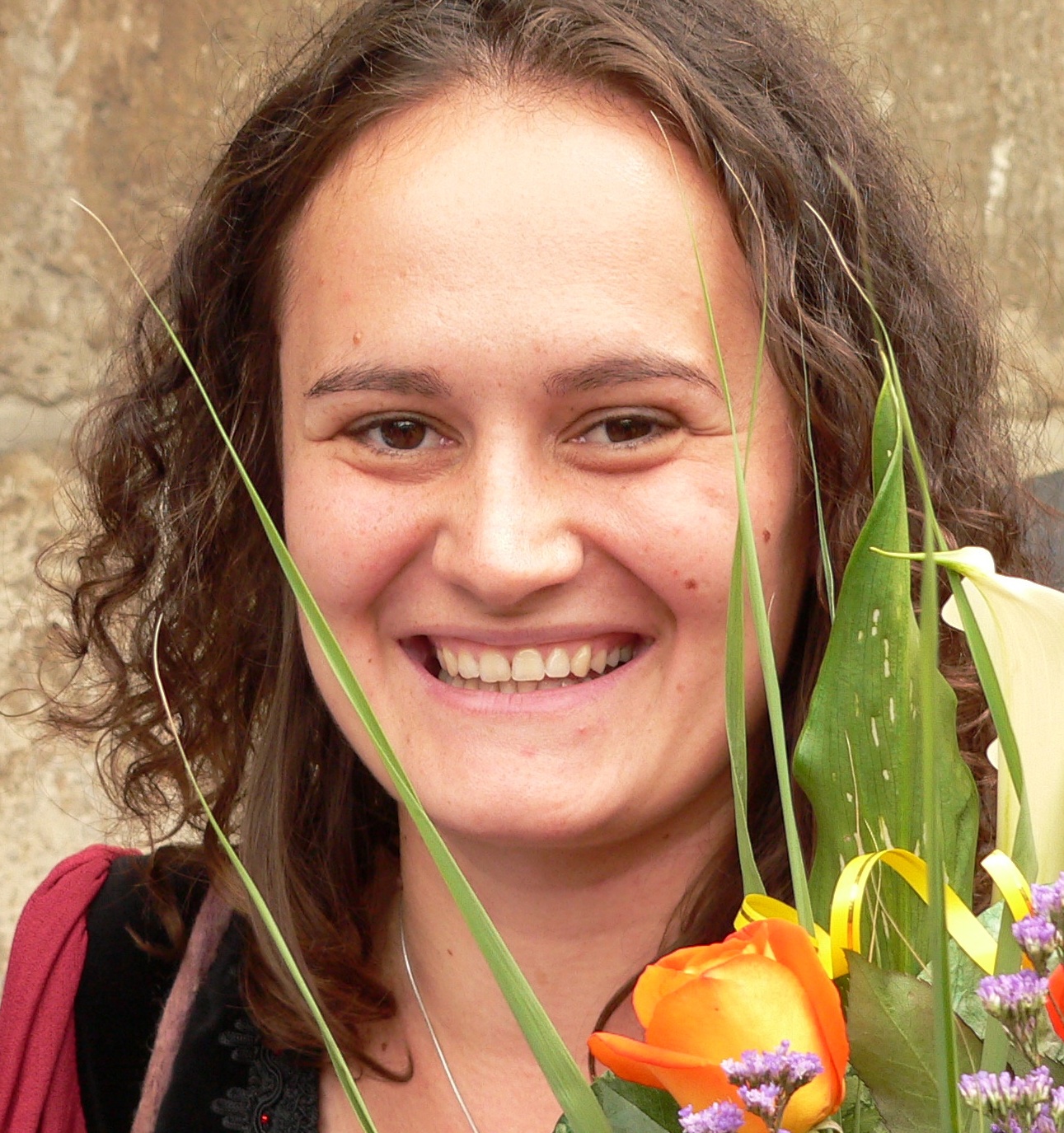|
New:
- L. Yuan, G.C. Chan, D. Beeler, L. Janes, K.C. Spokes, H. Dharaneeswaran, A. Mojiri, W. Adams, T. Sciuto,
G. Garcia-Cardena, G. Molema, P. Kang, N. Jahroudi, P. Marsden, A. Dvorak, Erzsébet Ravasz Regan, W.C. Aird,
A role of stochastic phenotype switching in generating mosaic endothelial cell heterogeneity,
Nature Communications (in press), 2015.
|
"Modularity is the human mind's lever against complexity." (Victor Bret)
It is also Nature's. Biological systems, from our bodies to cellular regulatory networks, are built of modules. And modules of modules, a hierarchy.
This is great news! It means reductionism is in, sort of, as long as we carefully chop the biological system at its joints.
We understand the modules in isolation, and put them together to figure out how the whole system works. Right?
Well. This is yet to work for drug discovery (see " Eroom's law" for the extent of their troubles).
The problem is, when these modules are wired together, they create a system which is strongly dependent on its microenvironment and history.
A registry of modules (and their behaviors) is not sufficient to decipher their coordinated response. We need to understand the laws that govern this coordination. Assuming they exist.
If and when we uncover general rules that link regulatory modules into hierarchies, we may then be in a position to understand cellular regulation
one module at a time, at every level of the hierarchy.
Research interests:
The goal of my research program is to uncover the principles of coordination between cellular phenotypes at multiple scales of organization, and build predictive
models of this coordination in endothelial health and disease. Specifically:
- Computational models of coupled biological circuits, each of which drive small-scale phenotypic
switches. The goal is to predict the coordination of module phenotypes and the emergence of
complex phenotypes at a larger scale.
- Development of theoretical measures, computational tools, and visualization techniques to aid dynamical modeling of multi-scale, hierarchically organized phenotypes.
- Measuring, modeling, and predicting the behavior of noise driven mosaic heterogeneity of the
vWF gene in vitro and in vivo, in collaboration with the Aird
and Khrisnan labs.
- Collaborations in wet-bench endothelial biology with the Aird
and Bentley labs:
- role of the FoxO1 transcription factor in coordinating cell cycle, cell growth, angiogenesis and cellular stress
- leveraging mosaic heterogeneity of the endothelium to identify regulatory switches (e.g., TNF-induced inflammation)
- role of bistabile sensorimotor circuits in sprouting angiogenesis.
- Applying the principles of hierarchical modularity to non-biological decision making (e.g., K-satisfiability, random Boolean networks),
in collaboration with Mária Ercsey-Ravasz.
Recent papers:
- L. Yuan, G.C. Chan, D. Beeler, L. Janes, K.C. Spokes, H. Dharaneeswaran, A. Mojiri, W. Adams, T. Sciuto,
G. Garcia-Cardena, G. Molema, P. Kang, N. Jahroudi, P. Marsden, A. Dvorak, Erzsébet Ravasz Regan, W.C. Aird,
A role of stochastic phenotype switching in generating mosaic endothelial cell heterogeneity,
Nature Communications (in press), 2015.
- H. Dharaneeswaran, R. Abid, L. Yuan, D. Dupuis, D. Beeler, KC Spokes, L. Janes, T. Sciuto, P. Kang, SC. Jaminet, A. Dvorak, M.A. Grant, E. Ravasz Regan, W. C. Aird,
FoxO1-mediated Activation of Akt plays a critical role in vascular homeostasis,
Circulation Research CIRCRESAHA.115.303227, 2014.
- Katie Bentley, Andrew Philippides, Erzsébet Ravasz Regan,
Do Endothelial Cells Dream of Eclectic Shape?, Developlental Cell, 29:146-158, 2014.
- Katie Bentley, Kyle I. Harrington, Erzsébet Ravasz Regan, Can active perception generate bistability?
Heterogeneous collective dynamics and vascular patterning, ALIFE 14: The Fourteenth International Conference
on the Synthesis and Simulation of Living Systems 14, 328-335, 2014.
- Carmen Priolo, Saumyadipta Pyne, Joshua Rose, Erzsébet Ravasz Regan, Giorgia Zadra, Cornelia Photopoulos, Stefano Cacciatore, Denise Schultz, Natalia Scaglia, Jonathan McDunn, Angelo M. De Marzo, Massimo Loda,
AKT1 and MYC Induce Distinctive Metabolic Fingerprints in Human Prostate Cancer,
Cancer Research 74, 7198-204, 2014.
- Dávid Deritei, Zsolt Lázár, István Papp, Ferenc Járai-Szabó,
Robert Sumi, Levente Varga, Erzsébet Ravasz Regan, Mária-Magdolna Ercsey-Ravasz,
Community detection by graph Voronoi diagrams,
New Journal of Physics 16, 063007, 2014;
Video Abstract.
Research experience - endothelial biology & systems biology:
- Organizing princliples of dynamical modularity in biological regulation. Endothelial cells are great examples of complex functional coordination.
This cell type displays extraordinary functional heterogeneity across the vasculature, a result of context-dependent,
combinatorial use of a sizable functional arsenal.
Deciphering how this coordination occurs remains problematic, in spite of detailed knowledge about individual functions.
The central questions driving my research revolve around this problem:
- Are there general principles that govern coordination
between regulatory modules?
- Can we use such principles to build a theoretical foundation for modeling multi-module regulatory systems?
- Is there a critical type of modularity that is key to deciphering a cell's higher-level responses?
We have recently defined dynamical modules as robust, multistable regulatory switches. Using this definition, we propose
three general principles that characterize coordination between these regulatory modules. We are in the process of developing
appropriate quantitative measures in order to test their validity in Boolean regulatory networks. We have built a dynamically
modular model of the mammalian cell cycle, and showed that this biological model obeys the three principles, while its
randomized counterparts do not. We are now extending the cell cycle model with an apoptotic and DNA damage switch,
them build the module responsible for growth factor signaling and cellular growth, an input module of the cell cycle engine in our current model.
- Biological noise-driven dynamic mosaic heterogeneity and functional bet hedging in vivo.
We have found a novel adaptive strategy used by endothelial cells to increase their phenotypic plasticity
and protect tissues from sudden environmental change. Briefly, the endothelium of healthy organs can exploit
biological noise to generate a spatially heterogeneous, slowly flickering mosaic of Willebrand factor
(vWF)-positive and -negative cells. These dynamic mosaics only appear in specific organs and
vascular beds, such as heart capillaries. Their absence damages heart capillary endothelial cells and neighboring cardiomyocytes,
but does not affect other vessels. Our data point to a novel, tissue-specific strategy for homeostasis.
- Bistability in endothelial morphogenesis. In a recent
Developmental Cell review I coauthored with
Dr. Katie Bentley, we explored
the parallels between endothelial morphogenesis and the core principles of adaptive systems robotics.
In a subsequent paper we showed that sensorimotor feedback can generate bistability in single endothelial cells
sensing VEGF gradients at the angiogenic front. This bistability pre-patterns the vascular front to some extent even before
lateral inhibition sets the pattern of tip/stalk phenotypes, and can significantly speed the formation of their physiological salt-and-pepper pattern.
- Role of the Akt -| FoxO1 -> Akt negative feedback in endothelial life and death. The FoxO1 transcription factor is expressed
by most mammalian cells and it affects multiple cellular functions such as cell cycle, apoptosis, oxidative stress response,
DNA repair, metabolism, aging and differentiation. Consequently, FoxO1 has been implicated in diseases as diverse as cancer,
diabetes, muscle atrophy or Parkinson's disease, but its effects are cell-type specific and often paradoxical. FoxO1 promotes
cell cycle arrest and/or apoptosis in many cell types, but it's presence in the endothelium is required for
embryonic vascular development. We have recently shown
that endothelial FoxO1 is both necessary and sufficient for embryonic development. Mechanistically, FoxO1 feeds back to up-regulate
the activity of its repressor AKT, and the downstream AKT target mTORC1. Loss of endothelial FoxO1 thus causes G1 arrest.
Conversely, overexpression of FoxO1 induces both AKT and mTORC1 in endothelial cells, and promotes mTORC1-mediated cell growth.
Excess FoxO1 nonetheless fails to increase proliferation, as it also induces G2 arrest. In contract, the FoxO1-AKT feedback
does not induce mTORC1 in nonvascular cells. Pharmacological elevation of FoxO1 may thus promote quiescence and ROS resistance
in some tissues, but carries the risk of damaging the vasculature.
- Bioinformatics.
- Metabolite profiling in Akt- and Myc-overexpressing prostate cancer.
- Genome-wide transcriptional profiling of phenotypic drift in freshly isolated endothelial cells.
- Genome-wide transcriptional profiling of multi-potent mouse and rat brain arachnoid cells.
- Identification of transcription factor binding sites.
Research experience - network science & physics:
|

